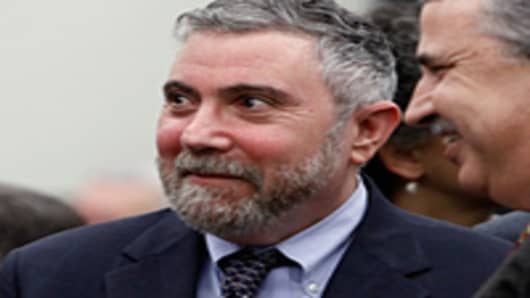(Before I go down this road, I should say that I believe the government spends too much, wastes too much, taxes too much and that the best thing for the government to do right now would be a truly radical tax cut. But that's not really a viable policy option at this point. There are no tax cutters left in DC.)
Having the Treasury and the Federal Reserve work together to create money would almost certainly be economically stimulative. It would produce the kind of inflationary growth that the Fed's conventional and unconventional monetary policies have failed to produce.
Here's how it would work. The Treasury would simply continue to pay all of its bills despite the fact that these exceed the money in its accounts. The Fed would just credit the accounts of any bank that presented a check from the Treasury, ignoring the fact that the Treasury's account is empty. In effect, they'd be creating money.
This new money would allow the government to pay its bills without crowding out private borrowing or raising taxes.
Of course, the new money wouldn't represent new wealth. It would simply inflate the money supply. But from a Keynesian perspective, that's exactly what we need.
So why isn't Paul Krugman out there calling for the overdraft solution?
__________________________________________
Questions? Comments? Email us atNetNet@cnbc.com
Follow John on Twitter @ twitter.com/Carney
Follow NetNet on Twitter @ twitter.com/CNBCnetnet
Facebook us @ www.facebook.com/NetNetCNBC



